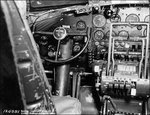B-17engineer
Colonel
I mean in terms of fending off fighters..........I personally say B-29.........WOuld the defence matter on what kind of plane ur enemies had like a B-29 faced lightly armored fighters, and The B-24 and B-17 faced more heavily armed fighters.........




